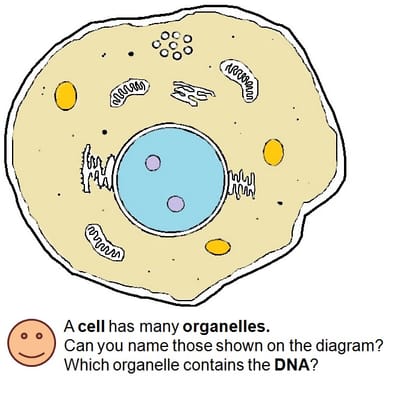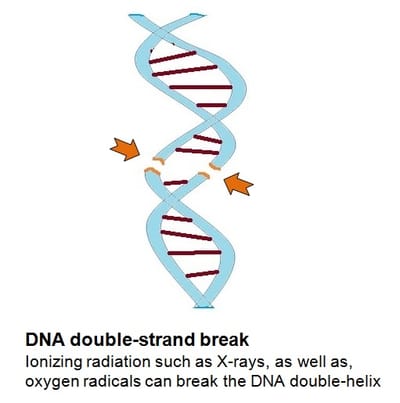GsR Project
The invisible world of DNA
Educational site about science
Why do scientists study DNA?
…after all it's just a chemical with a funny name - "deoxyribonucleic acid". The answer is simply because DNA stores our hereditary blueprint!
Scientists have made great progress in deciphering the DNA’s code. By understanding how genes control cellular functions, we begin to explain human diseases. We now know that damage to DNA can erase genetic information, and this is the primary cause of cancer. Yet, our DNA still holds many of its secrets…
Scientists have made great progress in deciphering the DNA’s code. By understanding how genes control cellular functions, we begin to explain human diseases. We now know that damage to DNA can erase genetic information, and this is the primary cause of cancer. Yet, our DNA still holds many of its secrets…

What if our DNA gets damaged?
How can DNA be damaged?
You though DNA stores precious information, so it should be stable over time? Well, it isn’t! Just as every other material, DNA can be damaged by its environment (inside cells).
Learn MoreOur body's cells repair DNA
Life would not be possible if our cells did not know how to repair DNA. Inside cells, many microscopic machines, called enzymes, team up to repair our DNA every day.
Learn MoreWhen DNA repair fails
Unrepaired DNA damage can create errors in cell’s genetic code. Cells are programmed to stop proliferating if this happens. Rarely, however, such cells keep dividing and make our body sick.
Learn MoreResearch project
What is our research all about...?
Said simply, we study how molecules, such as proteins and RNA wonder around inside our cells and do various jobs. In particular, we study tiny protein machines, called enzymes which team up to repair breaks in our DNA (depicted on the diagram).
The goal of the "GsR" project (Genome surveillance by small non-coding RNAs) was to investigate how RNA molecules partner with proteins to repair DNA.
Why is this important for society?
Breaks in DNA are rare, but can be dangerous for our body. Individuals with a genetic defect causing poor DNA repair are at higher risk for cancer. Understanding how these tiny enzymes repair our DNA, at long term, will improve the way we deal with diseases.
Said simply, we study how molecules, such as proteins and RNA wonder around inside our cells and do various jobs. In particular, we study tiny protein machines, called enzymes which team up to repair breaks in our DNA (depicted on the diagram).
The goal of the "GsR" project (Genome surveillance by small non-coding RNAs) was to investigate how RNA molecules partner with proteins to repair DNA.
Why is this important for society?
Breaks in DNA are rare, but can be dangerous for our body. Individuals with a genetic defect causing poor DNA repair are at higher risk for cancer. Understanding how these tiny enzymes repair our DNA, at long term, will improve the way we deal with diseases.


Researcher & Lab
Hello!
My name is Nikolay Tsanov, I am a researcher at National University of Ireland Galway.
I work with Prof Noel Lowndes at the Centre for Chromosome Biology, where I am involved in research, teaching and outreach.
If you have enjoyed reading about DNA here, then maybe you would also enjoy science... You can find out more about our research by following the links below.
Centre for Chromosome Biology: https://www.chromosome.ie/
National University of Ireland Galway: http://www.nuigalway.ie
My name is Nikolay Tsanov, I am a researcher at National University of Ireland Galway.
I work with Prof Noel Lowndes at the Centre for Chromosome Biology, where I am involved in research, teaching and outreach.
If you have enjoyed reading about DNA here, then maybe you would also enjoy science... You can find out more about our research by following the links below.
Centre for Chromosome Biology: https://www.chromosome.ie/
National University of Ireland Galway: http://www.nuigalway.ie

Contact
- Galway, Connaught, Ireland
